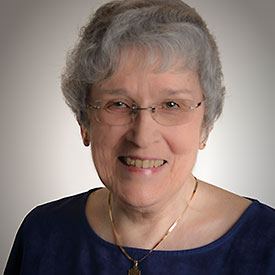The Word in Advent, Cycle A

In the Church, it is Advent, season of hope and joyful expectation. In the world, it is December, season of shopping, parties, crowds, and all kinds of pressures. How do we cross over? Is there any way to imagine, let alone experience, the trust in God’s promise to send the Messiah? How do we hear God’s promise above all the noise?
One way to overcome the internal and external background noise assailing our ears is to listen to the Word of God. Listening is counterintuitive, even countercultural. That’s the point.
St. Ignatius of Loyola taught that God speaks to us in our deepest feelings and desires. One way of exploring those feelings is praying with the readings for the Sundays of Advent, Cycle A, which are some of the richest in the entire Bible.
At the beginning of Advent, Matthew gets our attention with an image of the Messiah as the Son of Man coming at the end of time (Matthew 24:37–44). Later in the month, the prophet Isaiah in explicit terms predicts the coming of the Messiah in time: “The virgin will conceive and give birth to a son, and will call him Immanuel” (Isaiah 7:14). But during most of the season, there are readings that invite us to experience the longing for the coming of Christ into our hearts.

Isaiah predicts that people will beat their swords into plowshares; that lambs and small children will be safe among wolves and vipers; and that the blind shall see, the deaf hear, the lame walk, and the mute sing for joy (Isaiah 2:4, 11:6–8, 35:5–6). The implication that these promises will be fulfilled in Jesus is made explicit in the Gospel for the Third Sunday of Advent: “The blind receive their sight, the lame walk, the lepers are cleansed, the deaf hear, the dead are raised, and the poor have good news brought to them” (Matthew 11:5). These readings, with their vivid imagery and powerful emotion, lend themselves especially well to imaginative prayer, a way of reading Scripture less with our eyes and ears and more with our hearts.
Consider the vivid scene in Matthew 3:1–12, which we hear on the Second Sunday of Advent. Can you visualize John the Baptist, dressed in animal skins, thin and muscular from living in the desert, subsisting on “locusts and wild honey,” with long, untended hair and beard, and a light in his eyes reflecting the passion within? He was evidently a charismatic preacher, since he attracted great crowds. What does his voice sound like? Can you imagine yourself one of the crowd lining up to be baptized in the Jordan River? Can you acknowledge your sins? How do you feel after coming out of the water? Or do you identify with one of the skeptical Pharisees? What grace do you need this Advent?
In another example, consider the metaphors that the prophet Isaiah piles one upon another: flowers blooming in abundance, the land ringing with joyful song, water abounding in the desert, the weak made strong, the sick and the suffering made whole, and seeing “the glory of the LORD, the majesty of our God.” (Isaiah 35:1–6a, 10, First Reading for the Third Sunday of Advent). Can you visualize each of these images? What do they symbolize? As Christians, we believe that the longed-for Messiah comes not as the ruler of an earthly kingdom, but as the Savior of all humankind, promising not earthly conquest but eternal life. Are there elements of Isaiah’s prophecies that still remain to be fulfilled? What is our role in realizing these promises?
Our Advent liturgies invite us to look forward to Christmas as the coming of Christ at a particular time in history; the Second Coming of Christ at the end of time; and above all, the coming of Christ in our own hearts. The Word of God is alive in our hearts as we listen and reflect imaginatively.
“And the Word became flesh and lived among us.” (John 1:14)


